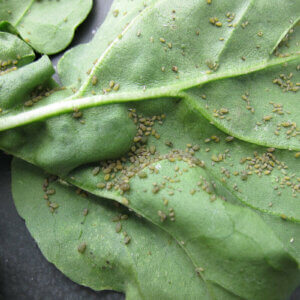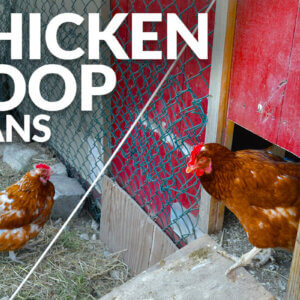With a greater focus on the environment than ever before, more and more people are trying to figure out how they can make a positive impact. If this sounds like you, then indoor composting might be a top solution for your home!
Indoor composting is environmentally-friendly. Plus, the compost can also provide excellent fertiliser for your garden.
What Is Composting?
Composting is the process of naturally decomposing organic material. It is kind of like recycling. The main difference is that instead of recycling plastic or paper you recycle organic material.
For homes with an outdoor space, like a yard, it is a common practice to use a large outdoor compost bin.
Yet, with the rise of urbanisation, many of us live in apartments, lofts or condos. This can make it difficult or impossible to compost outdoors.
Still, indoor composting can also benefit you even if you have an outdoor space. You might prefer to compost your material inside, for the sake of convenience.
If you have access to an outdoor compost bin already, which you or your gardener uses to fertilize the garden. If this is the case, a portable indoor compost container can help you easily transfer compost outdoors. You also may want to have an indoor compost container if your city picks up compost as part of yard-waste collection.
The David Suzuki Foundation, a leading environmental research initiative, suggests that the best indoor compost bins fall into two main categories. These categories are vermicomposting and bokashi composting.
Vermicompost bins make for some of the best indoor compost bins. This type of compost bin uses worms to decompose organic matter. Basically, you feed the worms your kitchen scraps like carrot and potato peels. Then the worms decompose it for you.
Plus, vermicompost bins can easily fit into small spaces. So you can tuck them in a kitchen cupboard or under the kitchen sink.
This 3 tray vermicompost bin by Nature’s Footprint provides an excellent option for indoor composting.

Another great choice for you indoor compost needs is Bokashi composting. Bokashi is a Japanese word which means fermented organic matter. In contrast to vermicomposting, this process does not use worms to decompose your food scraps.
Instead, like the translation suggests, the Bokashi method creates fertiliser through fermentation. During fermentation, microorganisms break down food scraps like banana peels, fish, or cheese.
Already growing vegetables on a balcony, windowsill or other outdoor space? Then composting these scraps for fertiliser is a great way to continue on your environmental trend.
This Bokashi compost bin is a great option for your composting needs. It is 5 gallons so it can hold plenty of material and provide you with a decent quantity of fertilizer.

Why Bother With Indoor Composting?
According to Duke University’s Centre for Sustainability and Commerce, on a typical day, a person will create around 4.3 pounds of waste. A lot of the time, this waste will head straight to a landfill, but it doesn’t have to.
You can actually compost approximately two-thirds of the waste generated in a household. So, even if you can’t reduce how much you waste when cooking, most of it doesn’t have to hurt the environment.
What Attributes Make The Best Indoor Compost Bins?
When you are looking for the best indoor compost bin for your home, there are a few things to keep in mind.
First, you need to decide how you want to compost. Are you going to actually compost indoors, or do you just need a container to take outside? This decision directly influences which indoor compost bin is best for you. So, it is crucial to figure this out first.
Then, you need to think about where you want to put your indoor compost bin. If the only available space is under the kitchen sink, you will need a compact compost bin. In contrast, if you have quite a bit of room in your kitchen closet, then you may be able to opt for a larger compost bin.
Many compost bins are designed to match your kitchen’s interior design. Some ceramic compost bins even have a quaint design. So, if you want to keep your compost bin in the open then keep an eye out for one of these stylish designs.

It is also important to consider the size and weight of your compost bin. Chances are, at some point you will want to empty your compost bin. If you can’t lift the compost bin when it’s empty then it is going to be a problem. This is because once your compost bin is full of organic material it will be much heavier. So, if you can’t lift it when it is empty it is best to consider a smaller or lighter option.
Planning to purchase an indoor compost bin to transfer materials to an outdoor compost? If so, then you will also want to make sure that it is easy to clean.
The price is, of course, another factor to keep in mind when shopping around for an indoor compost bin. Fortunately, there is a wide range of indoor compost bins available on the market. So, no matter what your price range is, there is an option for every budget.
Can You Make Your Own Indoor Compost Bin?
If you prefer DIY projects then you are probably curious how to go about making the best indoor compost bin from scratch.
To make your own indoor compost bin, the first thing you will need is a container. The size of the container depends on how much you are planning on composting at a time. It also depends on whether or not you will be emptying the compost into an outdoor bin. If this is the case then the size of your indoor bin can be much smaller. Some people even use coffee tins.
DIY Natural provides some great tips on how to make a compost bin out of a coffee tin. The tutorial suggests that the supplies you need are a coffee tin, charcoal filters, a drill with a ¼ inch bit and a hot glue gun.
The first step in their process is to drill 10 or more holes into the lid of your coffee tin. Then, just hot glue your charcoal filter to the lid and screw it into place on the coffee tin. The charcoal filter will help contain the odors from the compost so it is recommended to replace the filter every few months.
To make it easier to clean your coffee tin compost bin, try using biodegradable compost bags.
If you are looking for an indoor compost container that is a little larger than a coffee tin, Apartment Therapy provides an alternative option. In their tutorial, they suggest you use a metal trash can, a drill, soil, a tray to place underneath the compost bin and shredded newspaper.
Then like the coffee tin option, you will need to drill holes through the lid of the bin. Next, cover the tray with newspaper and place the compost bin on top of the tray. For the final step add a layer of soil to the bottom of the compost bin and place the shredded newspaper on top of this. After you complete this step your indoor compost bin is ready for use!
In the end, no matter whether you choose to build your own indoor compost bin or decide to buy one, you will be helping out the environment and your garden!











































Leave a Reply